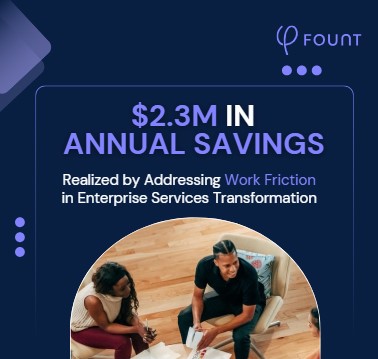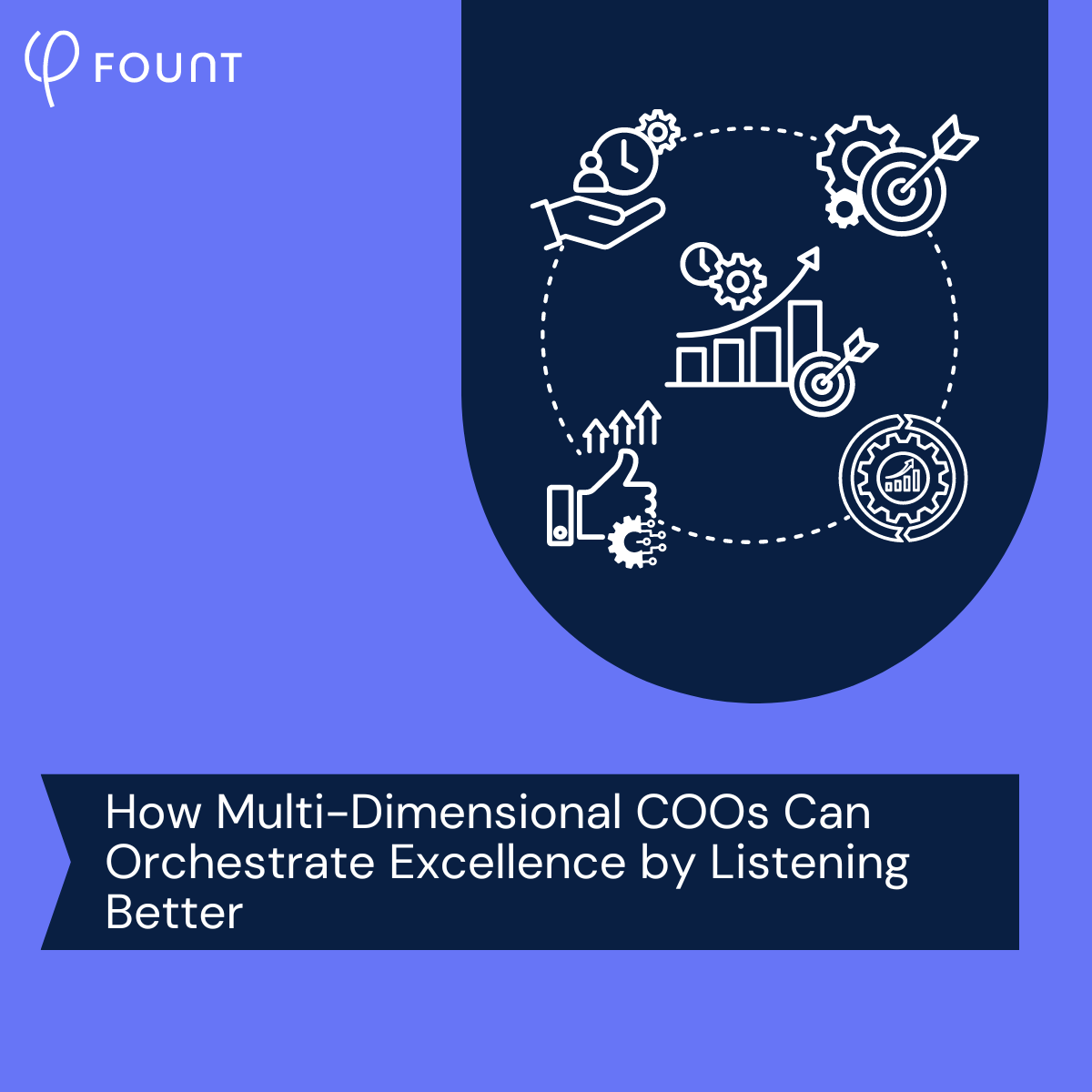Table of Contents
PODCAST: Minimizing Friction in the Workplace
A summary of the details of the article will go here.
In this episode of Bringing the Human back to Human Resources, Traci Chernoff speaks with FOUNT’s CEO, Christophe Martel, about the essence of work friction, how it affects both employees and employers, and the substantial cost it incurs in terms of productivity and engagement.
Christophe delves into the complexity of the issues, highlighting that work friction is subjective and varies across generations. He explains how FOUNT uses data-driven insights to identify and prioritize areas of friction, providing a roadmap for organizations to make targeted improvements.
“Work friction is in the eye of the beholder… It’s becoming more and more acute with every generation.”
You can listen to the full episode on Apple Podcasts, YouTube or Spotify. A transcript from the episode appears below.
Transcript
TC:
Alright, so this week, we’re going to talk about something that actually has not really been brought up a ton on this podcast, and that is work friction. And we’re gonna dive into what that means. But I’m not doing it alone. I have Christophe Martel with me, who is the co-founder and CEO of FOUNT Global Inc., a SaaS company that helps global organizations reduce work friction and improve employee experiences. FOUNT helps companies identify what’s at the root cause of employee dissatisfaction and prioritize what to fix in their environment. Previously, Christophe was CHRO of CEB, a global research and advisory company acquired by Gartner in 2017. So, Christophe, I’m sure you’re gonna have a ton of research information for us. But welcome to the podcast. So happy to have you here.
CM:
Thank you, excited to be here.
TC:
Yeah, of course. Well, maybe we have to start at the top, can you walk us through what work friction is and how you kind of became like this expert in solving this problem.
CM:
So, what it is? Well, it has two phases, it’s the same phenomenon. But for employees, it’s anything that gets in the way of them doing what they’re trying to do at work. And what they’re trying to do at work can be their job. So, a nurse trying to provide care to a patient. But also, what they’re trying to do at work is use the company’s services to employees such as figuring out their career, taking a long leave for health reasons, changing their shift or any other aspect of their life at work, that the company plays an important role in. And the fact is that when individuals do this, and it’s actually the larger the company that they work for, the truer it gets, they experience a ton of friction means that there’s a ton of stuff getting in that way that shouldn’t. From an employee’s perspective, it’s stuff that, you know, makes me spend energy that just shouldn’t be there – that’s the employee view.
From an employer’s perspective, it’s essentially a super costly headwind. And the term headwind is this kind of invisible, “slower downer” that kind of slows the business down. Gartner actually did research on this and found that it takes on average, two hours of work away from employees every day, right? So, if you say two out of eight hours, that’s a pretty significant portion of everyone’s work in a hundred-thousand people company that is wasted every day and that is very costly from a pure productivity perspective, right? So, there’s essentially a 25% productivity opportunity for companies to recapture by removing work friction.
The second impact that work friction has is for individuals having to overcome obstacles that shouldn’t be there is a very frustrating exercise, right? As a human, it’s just not a good way to spend one’s time. You know, you’re asking me to do a job, and you make it difficult for me to go do it, it’s hard enough as it is that you don’t need to add to it. And that is where, you know, individuals essentially start burning out or getting disengaged with a company when the essentially their friction meter starts going over their tolerance limit. And for that – from an economic perspective for employers – represents the cost of burnout and disengagement are really high. If you look at attrition rates in North America, that are going down, right, so this is still a very tight talent market, it’s hard to find people hard to keep them. And in this case, friction is a self-inflicted wound by organizations. And that’s also an opportunity to tackle. So that is work friction.
TC:
Yeah, thank you for describing that for us. And or defining that for us. And, you know, my immediate thought when I think of work friction is sometimes this cross-functional element that, you know, maybe within your own team, or you know, department within an organization, you’re working like a well-oiled machine. But then when you require something from another department, or you need to work cross-functionally, we always reference like these friction points that can happen just because, you know, departments might work differently, or people might work differently, even just outside of their own team. So that’s like the first thing that I think of, because of the challenges that are just present when it comes to cross-functional work. But at the same time, or on the other hand, I also think about to your point, businesses that don’t keep the easy things easy, and make unnecessary difficulties out of something that otherwise could be quite simple. Like a perfect example is the US government and these I-9 changes. Like we know, the large majority of workforces have gone remote. And yet, they didn’t update the I-9 process to meet employees and employers where they are. And so, they created this huge burden, operational burden for HR teams and employers. And then now just this week, they’re like, actually, we’re gonna change it, because we heard everyone complaining, you know, we’re gonna make a change. And so, these are, these are just some examples that I think of when I think of work friction.
CM:
That’s a good one, the latter one. I’m French, so I don’t want to comment on the US government, but on the French government as long as you’d like. In this case, you could argue that the work friction introduced by new federal regulation – or actually absence thereof in this case – is introducing work friction. But the question is, what is it that employees hold their employer accountable for? So, work friction is a very subjective thing. If you think about process friction, for example, it may be a very inefficient process. By definition, something that has too many steps in it may or may not create work friction, actually. A process can be really inefficient, and from a user perspective, it can still work. Say, the payroll process may be super inefficient as long as I get it at the end of the month, I don’t really care. The two are connected. But work friction is the subjective opinion that an individual has of how difficult you’re making something that shouldn’t be.
In the case of the I-9, employees may very well say, well, the government is the one to blame, rather than my employer. And now, it’s still extracted some economic costs, because it slows down productivity. However, you don’t get the other side of it, which is, do I really want to work for this company that is making my life difficult on purpose, right? Actually I can see this in FOUNT as a company that we’re, we’re not very big, right? You can see that work friction exists in a really small company, but seems to be detected and figured out almost on the fly because everyone is within reach, to do just that. Things get difficult when companies start hitting 1,000, 2,000, 3,000 people where now you have to set up a bureaucracy to operate the system. And the nature of that bureaucracy is to create rules and processes and swim lanes and decision rights and all the rest of it. Often, these things are not designed with the user in mind – the user being the employee. They’re actually designed with, what is it that the business needs, right?
So, extreme case in any financial institution that serves consumers, there’s a lot of regulations, there’s a lot of security guardrails all over the bank, that essentially makes the life of call center agents more complex and sometimes it becomes so complex that they can’t do their job, because there’s just too much in their way and that gets in their way as employees and also gets in the way of the customer experience on the other end. The question for companies is how to navigate on one hand, the pressures of the process integrity and the structure that you need to maintain in a big organization, but also let enough leeway for employees to do the work in the way that it’s supposed to be done. Often, in large organizations, the former imperative is the one that drives rather than the latter and one of the ways that we help our customers is to help them understand where work friction is occurring, almost like with a heat map that says, “this is causing more friction, or that is causing working friction, here’s when it does and what you can potentially do to fix it.”
TC:
Got it. That was going to be my question for you actually, is how FOUNT is identifying these areas where work friction is caused and then the other side of this too is that I was reflecting on what you said about large organizations and the level of work friction that they run into because of the need to manage the process, create more process, create more barriers, right? But then I was also thinking about how there’s still even in companies that are much smaller the work friction is there; it just looks different. And, you know, when I think about that it’s really agnostic based on – agnostic to the size of the company, but that the actual type of friction, or where the friction comes up is probably what changes, right?
CM:
True, the thing about a small company is that work friction is most of the time acceptable to employees. So, remember, it’s a subjective assessment, from a worker to say, when you work at a startup, you don’t expect that you’re going to have super well-oiled processes everywhere. Actually, is kind of even part of the expectation that is not going to be like that. And sometimes it creates friction, because I don’t know, you know, your 401k management may not be as smooth as it would otherwise be in a big company. But because that’s expected, you don’t run into that frustration, even though you do take a hit on productivity. And it’s a little bit similar. If you think about decision rights in startups, right? They’re not very well defined. You don’t have very well-established rules. But people just found their way around that ambiguity and make it work because that is expected.
If you work for a really large company, and you find that there’s ambiguity in decision-making, in a really large matrix, that creates all kinds of tensions that are political, and otherwise, that become really painful for, for now, not just a few people, but hundreds or thousands. Maybe the last thing to say and then I’ll respond to your question is that work friction is, as I mentioned, is kind of in the eye of the beholder. I was born in the 60s in France, and I went through all kinds of experiences. I have a pretty high tolerance to friction, right? I mean, I learned to program in Fortran a long time ago so that talks about friction. My son, who is 22, has very low tolerance for work friction because the expectation is that everything runs like the apps and the environment that he operates in. My expectation is different, right? This friction problem is becoming more and more acute with every generation. So, between Millennials and Gen Z, who are going to be just the bulk of the working population very shortly, their expectation for friction, are, was very low, like don’t mess with me basically, make it easy for me to do what I need to do.
How do we do that, you know, with that kind of subjective aspect in mind is the only ones who know work fiction are the ones doing the work, by definition, right? So, we see this with our customers, whenever we ask executives, “where do you guys think work friction occurs?” 99% of the time they get it wrong because their image of where friction occurs is usually based on what their managers tell them, or what anecdotes told them when they did, a ride along somewhere or whatever. When you actually get real employee voice around the parts of the environment in which they work that create friction, you suddenly discover an ocean of opportunities to go and tackle. We do this through surveys and various other means of text analytics and the like to understand which parts of the environment – and that means digital things such as digital tools, processes, policies, decision rights, structures, workflows, so anything that essentially organizes the work – which of these things are working (because some of these things are) and which of these things are not. Sometimes which combinations of things are not working.
That’s the one thing that we’ve realized is that friction occurs in human experiences, right? It’s when people try to do something. Let’s say if I’m in a customer service role and I try to solve a customer problem, I’m going to have digital touchpoints everywhere (software, calling equipment and various other things) I’m gonna have policies which regulate, like what I can do and not do with this customer, and where are the boundaries. And so, all of that is defined by the business, I’m going to have human interactions with the customer, or maybe with my supervisor, and whoever else. It’s a very complex ecosystem that an individual performs their job in. And the solution is never just to fix one thing, it’s usually to find two, three or four things that, in combination, are creating friction for these individuals. And when you do find them, you actually can make really quick improvements, and see the results in and through data. That’s our approach. It is essentially data based. It essentially captures the voice of these employees about their environment, and we have an entire what we call work model that encapsulates how work works in the complex environment and that spits out essentially those heat maps that people use to go fix things.
TC:
Perfect, thank you for explaining that. It’s really interesting, because I’m sure that then you’re getting this data, you’re seeing where these friction points are and businesses are like, okay, this is really clear, this makes sense, let’s improve these friction points and that ultimately, directly impacts the employees engagement, especially considering your point around it being subjective, that if there’s this like critical mass that is saying this is a friction point for all of us, or 80% of us, then to be able to improve the experience for 80% of employees is pretty impactful. Otherwise, you don’t really have that type of opportunity and other types of situations within business.
CM:
Good point. A couple of things there. Number one, what really matters is that businesses are able to have data to quantify and prioritize the amount of friction people experience and we prioritize that using two axes. One is performance – which of these activities in which activities do they incur the most friction? For example, solve a customer problem. And second is importance – which is how important is it to them? And how frustrating is it to them when it’s not working? One of the most – like across the board – one of the most frustrating things for employees is when they tried to get a new internal job in a big company, it tends to be so complex that no one follows up on application. No one gives them feedback, and so on, so forth. That’s very frustrating for them. And that’s actually one of those that come to the top of both importance and also bottom of the performance barrel. Thing one that’s important is prioritizing because everything has friction, it’s just a question of going after where there’s most and where it matters most.
The second thing is to be able to see the difference. When you go take action on a friction point, you can actually measure whether it’s getting better or not. And that’s kind of the beauty of it, which is hard to come by in HR is to be able to measure the before and after to see if the action that we’re taking is making a difference. Sometimes it does, sometimes it doesn’t, right like the only ones who know again, are the ones who are doing the work. It is a way to approach even HR investments and HR initiatives with a much more continuous improvement, incremental improvement spirit than the spirit of, we’re gonna go create a perfect process that is going to make it great for everyone and then we’ll never talk about it again. Because that’s not how it really works in real life. It is kind of pushing HR discipline, if you will, in a direction that is almost similar to the way customer-facing teams have moved, which is to have really hard-edge data that tells them where to focus, what to focus on, go try a quick sprint to fix things, make things better, measure the result. And when you start showing results that are going up, everyone will give you budget to continue what you do. You no longer have to find these hypothetical big transformation dollars to power things forward.
TC:
Right, there is a power and data and the quantitative piece to that really helps HR professionals and other business leaders get their points across and get their budgets approved and it makes me think too about like, what you would say the biggest areas of opportunity to improve? Like, you know, whether it’s business and employee performance in this area or this arena. And, you know, especially considering the way that work environments have changed, like we have remote, we have hybrid, we have in person, we have people who are worried about AI taking over their jobs, right, like there’s so much coming down this, you know, this pipeline, so to speak, in the ever-changing work environment. So, what are the biggest areas of opportunity?
CM:
There still is a very big stream of central investments to try to lift up all boats in terms of experience. So, digitizing a bunch of stuff that is right now manual, you know, overtime does help do that. And that’s run centrally with COEs and HR strategy and et cetera. But where we see a lot of opportunity actually is more in business units for these large companies, where you have P&L owners, who have, I don’t know, a billion-dollar business unit with, let’s say, 10-15,000 employees, and where attrition really bites, right? So, attrition and productivity are basically these folks, you know, and that’s a make or break. From their perspective, there’s really no good solution that HR has come up with to resolve these things. But it’s been very, there’s been a lot of effort, right? So, it’s not for lack of effort or lack of trying, but things haven’t really moved about it. You look at quit rates in North America have kept increasing for the past 10 years, right, and engagement that kept decreasing. In a way, what is it that in the business – not at the corporate strategic strategy level – but in the business, what is it that they can do differently? And what we find with our customers is, essentially, the activities that are the most fraught with friction are a combination of “HR things” like finding a career path in the company, but also, “Business-driven things” like my workflow, the things I do, when I try to, I don’t know, resolve a customer issue, I don’t have the information I need, I can’t get the approval fast enough to solve the problem for my customer. These kinds of things are actually owned by the business.
If you want to reduce friction for employees that are at the coalface customer facing, and that are really driving the business, you have to be able to solve at the HR and at the business level. And usually, business units are the best place to do that. So, there’s actually huge opportunity there to make an impact and for some of our customers, there’s been a tremendous uptick in retention rates, and also in productivity and, overall, like just health of the business by removing things that no one knew were broken. But then when you uncover them, and it kind of like frees people’s ability to just do that work, which is kind of what they all want.
TC:
Right, at the end of the day that’s you know, it’s your point, it’s already hard enough let’s just keep everything else as easy as possible. And, this example that you’ve used around like the internal mobility and promotion opportunities it’s such a good example because it is, I don’t think I’ve ever worked for a company that has gotten it a 100% right or should say nor have I seen a company not have this issues because you know it’s like I don’t what it is, I don’t know if it’s a mentality thing or if it’s just you know we forget the value that we place on positions like I think about when a company has an open role and they have hundreds and hundreds of employees and maybe five people say hey I’m really interested in this role and then we make it more difficult for our internal employees than we do for an external candidate. And it comes down to this like almost this notion of how do companies set up their processes in recruitment so that they are prioritizing internal candidates before external candidates, you know, it’s such a great example.
CM:
There’s a backdrop to that. First of all, every company out there – every large company – says you should come and work for me. I’m big, and I’m gonna offer you great growth opportunities, right? That’s the EVP statement which makes sense. You’re big, therefore it’s gonna be, maybe it’s gonna be more bureaucratic, maybe it’s not gonna be quite as fun as a smaller one but I’m going to have plenty of places to go and then you show up there and no one talks to you about your career for the next three years. Now, I mentioned about my son like you know people don’t have that kind of patience they are like well this was just a promise that was not kept.
The reason why companies struggle with it is because it’s really complex when you really think about the both the experience of an individual in a big company thinking about their next role right just thinking about it is already an activity in itself and then evaluating what could be the things I could do and what things do I need to learn to be able to go do it and who should I talk to about it, and what my manager is going to say about it, and what was the career framework at the company suggest I should be doing, and where I can go and then the career portal that shows me available jobs, and then the talent acquisition team that I need to go and interact with. As a former CHRO looking into these kinds of things from the top, you don’t know where it breaks, you can only see the result which is that people are not unhappy with it but which part of all these things and all these services essentially breaking down.
That is what FOUNT actually does which is to essentially illuminate, it’s almost like an x-ray of in all the systems that provide these experiences, here’s where the friction occurs so you can root it out. That is perhaps one of the most acute examples that frustrates employees and that employers again are aware of the problem, but actually are not really sure how to address it. And buying another talent platform may help, but who knows? Until you know what problem you solve, you’re still you know guessing.
TC:
It’s so true and like anything else there are leaders who are better at focusing on talent development and career development than others and so there are teams that probably do a really great job of this and really focus on having those questions in every discussion, what you know how are you feeling in your career what do you see for yourself what areas of development do you have and then there’s that like that micro-element there where it’s the employee and their manager and then there’s the macro which is the company’s strategy around talent development and so it is an acute example and it’s great one.
CM:
I’m happy to move town if you’d like, but like if you think about this example, you’re touching on a really important thing which is the role of managers and all this. Managers end up being a friction absorber. In other words, they’re the ones that take an environment that makes it difficult for people to pursue a new job. It’s not them doing it on purpose – its inadvertently making it difficult – and managers are compensating for that by being extra good at doing what you described. But that’s only unicorn managers, that’s the 20% of managers we all wish we had everywhere, but the 80% doesn’t do that. The real issue is how do we make the system work for people without having managers having to be heroic at all times in work. That’s a great example where all the wires that I described earlier plus more can be designed and optimized to provide support to someone who wants to figure out a career, you just have to know what to fix and how to build it.
TC:
Right. I guess to wrap us up here because you’ve shared so many wonderful insights and really it’s a great topic for everyone to think about how we reduce work friction and those opportunities, what would you say for those who are in HR or other areas of the business leadership who are listening, what would you say should be you know or what would you advise should be their first focus to reduce work friction? What are some actions items or steps they can take today?
CM:
I was a business leader for many, many years before I became CHRO. There is real tension between HR and the business of whose fault is it. And just acknowledging that the fault is shared and actually you know we have 5 million data points that show us that it is shared accountability between the things that the business owns and the things that HR own. Therefore, the only solution is going to be a collaborative one. In other words, both the business and HR putting their heads together to solve the most important friction points for employees – That’s thing one.
Thing two is work friction is one of the rare things that can rally both chief financial officers and CEOs but people who care about productivity and people who care about employees’ well-being. Employees themselves hate work friction. CFOs hate two hours of work wasted a day so. How often is there a common cause like that you can rally around to go and tackle together with employees? That’s thing two.
Thing three is the best way to understand work friction is from employees. It means that acknowledge that HR teams even those that are close to the frontline usually don’t quite know where exactly is it and they certainly can’t quantify it. And if you can’t quantify anything, it’s very hard to get the organization focused on resolving it. I think that would be the last thing is get essentially friction data that shows the rest of the organization the opportunity that resides in some of these friction points so that you can galvanize action and measure results. Maybe the final message on it is it’s not an unsolvable problem, it’s one of these things that’s been around for ages that’s becoming more and more pressing. Right now everyone is just saying, “well you know it’s kind of the lay of the land, we have attrition rates at 30 plus percent in our frontline teams, it’s been that way for the past five years…” Actually, that can be curved if tackling work friction so it no longer is an unsolvable problem.
TC:
Right, which provides a lot of hope for organizations right?
CM:
Exactly, that’s right.
TC:
It’s something that we can we can solve, it might not be easy but it can it can be solved with the right data and I love this concept of you know this aligning mission and something that unites the various areas of the business on one common ground so that’s amazing and Christophe, I really appreciate you joining the podcast and sharing all of your wise words and wisdom and insights with us, where can the listeners connect with you and learn more about FOUNT?
CM:
So, on our website, LinkedIn with me, I don’t know, write to me about anything but I think the website is perhaps the best path.
TC:
Perfect and for everyone listening we have all the links linked in the show notes so you can get connected to Christophe and to learn more about FOUNT just click the link to the website and have a great time learning more about what it is that they do. Christophe, thank you so much again and really appreciate your time.
CM:
Thank you, Traci, great to be here.
About Bringing the Human Back to Human Resources
People are at the center of every business–or at least they should be. “Bringing the Human back to Human Resources” is a podcast hosted by Traci Chernoff, a Senior Director of Employee Engagement, who has spent 10 years in critical HR leadership roles. Traci explores the delicate balance between people and business and destigmatizes what it means to be in “Human Resources”.
To learn more about work friction, download our latest whitepaper.
Related Resources
See all News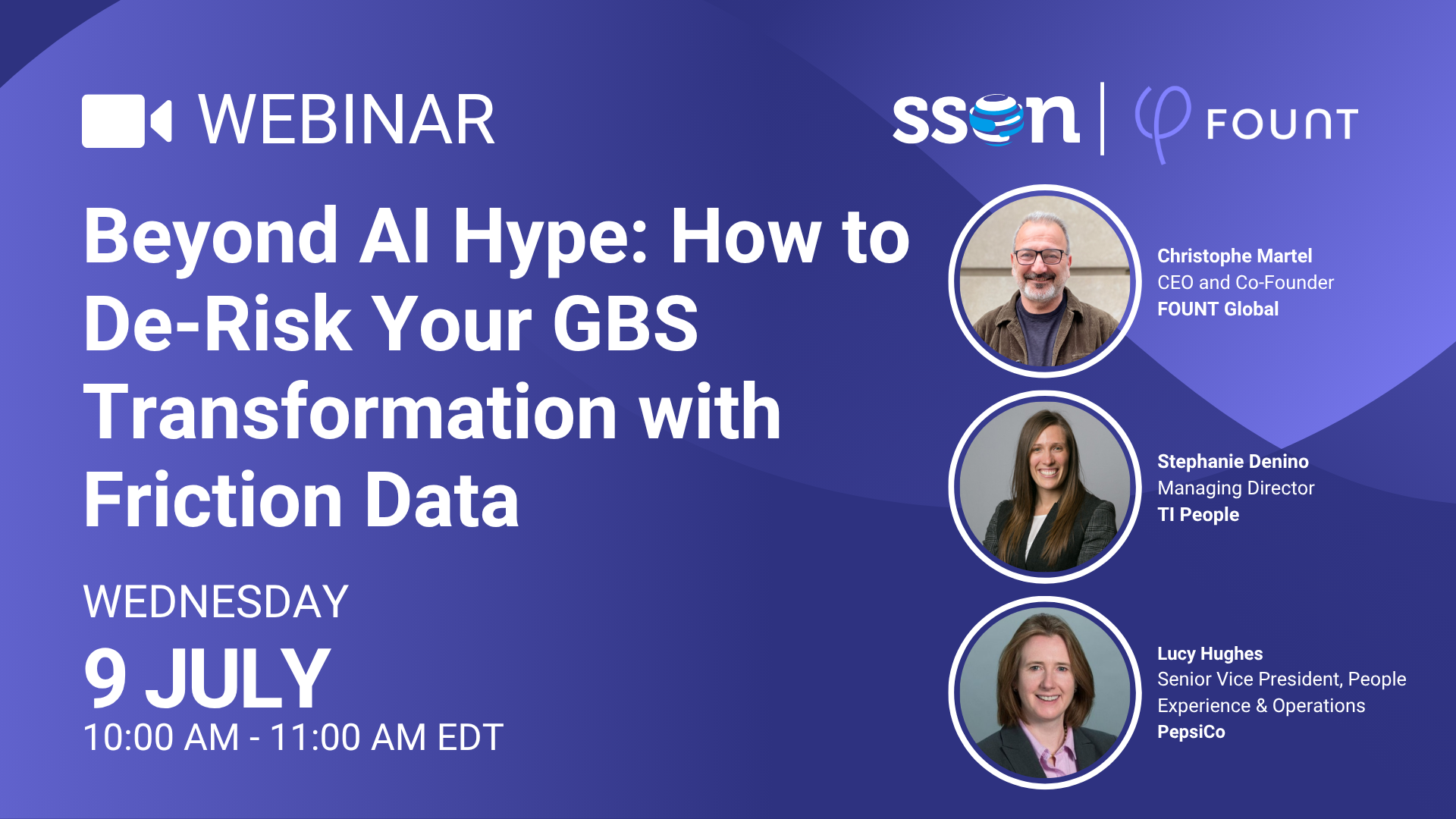
FOUNT News
LIVE Webinar. Beyond AI Hype: How to De-Risk Your GBS Transformation with Friction Data

Guest Post
3 Signs Your GBS Is Creating Friction Instead of Flow (And How to Fix It)
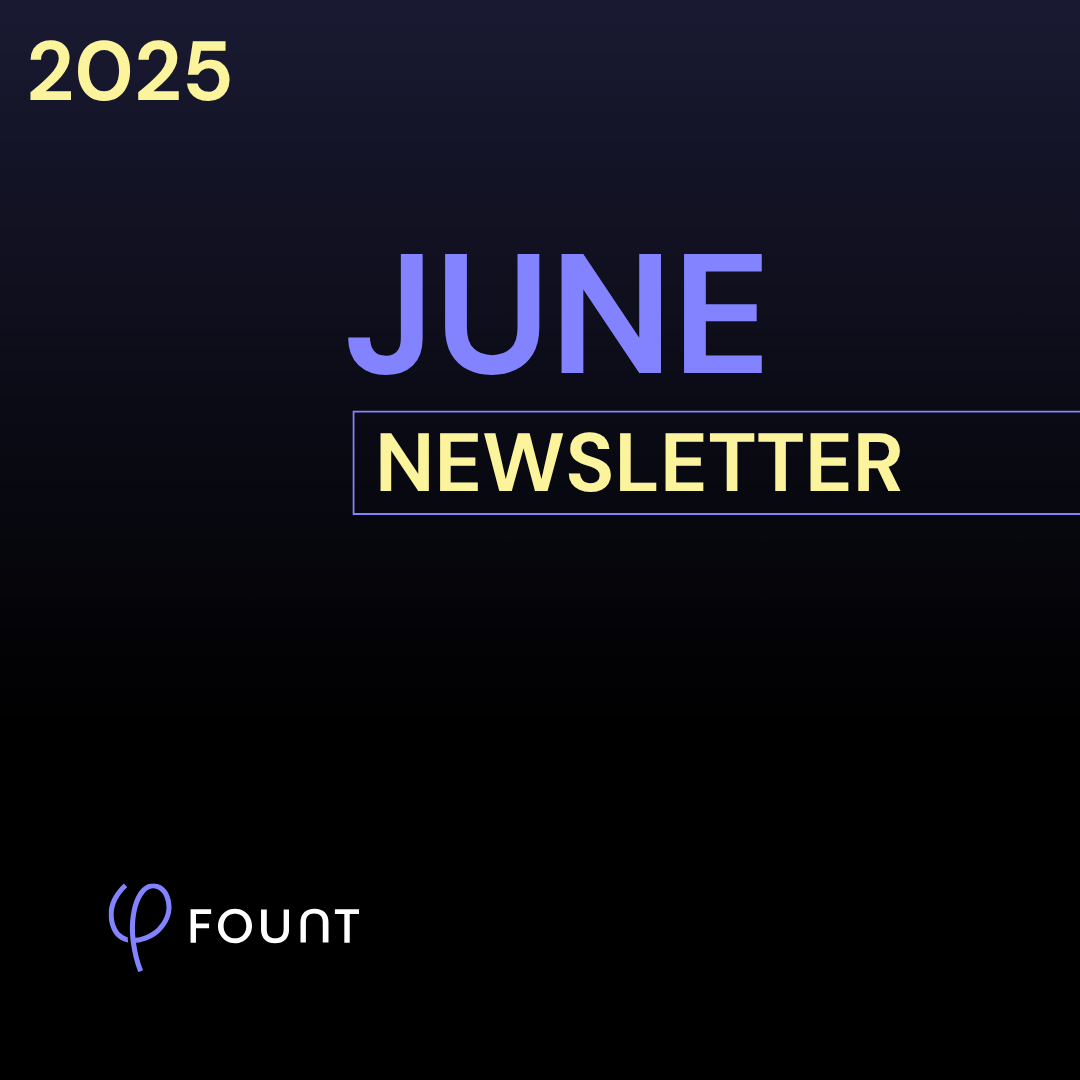
FOUNT News
June Newsletter: Friction is Killing Your AI ROI.

Insights
Breaking the False Tradeoff in GBS: Efficiency vs. Experience

Events
LIVE Webinar – July 9th for SSON Network. Beyond AI Hype: How to De-Risk Your GBS Transformation with Friction Data

Insights
To Create New Value, GBS Leaders Need Different Data
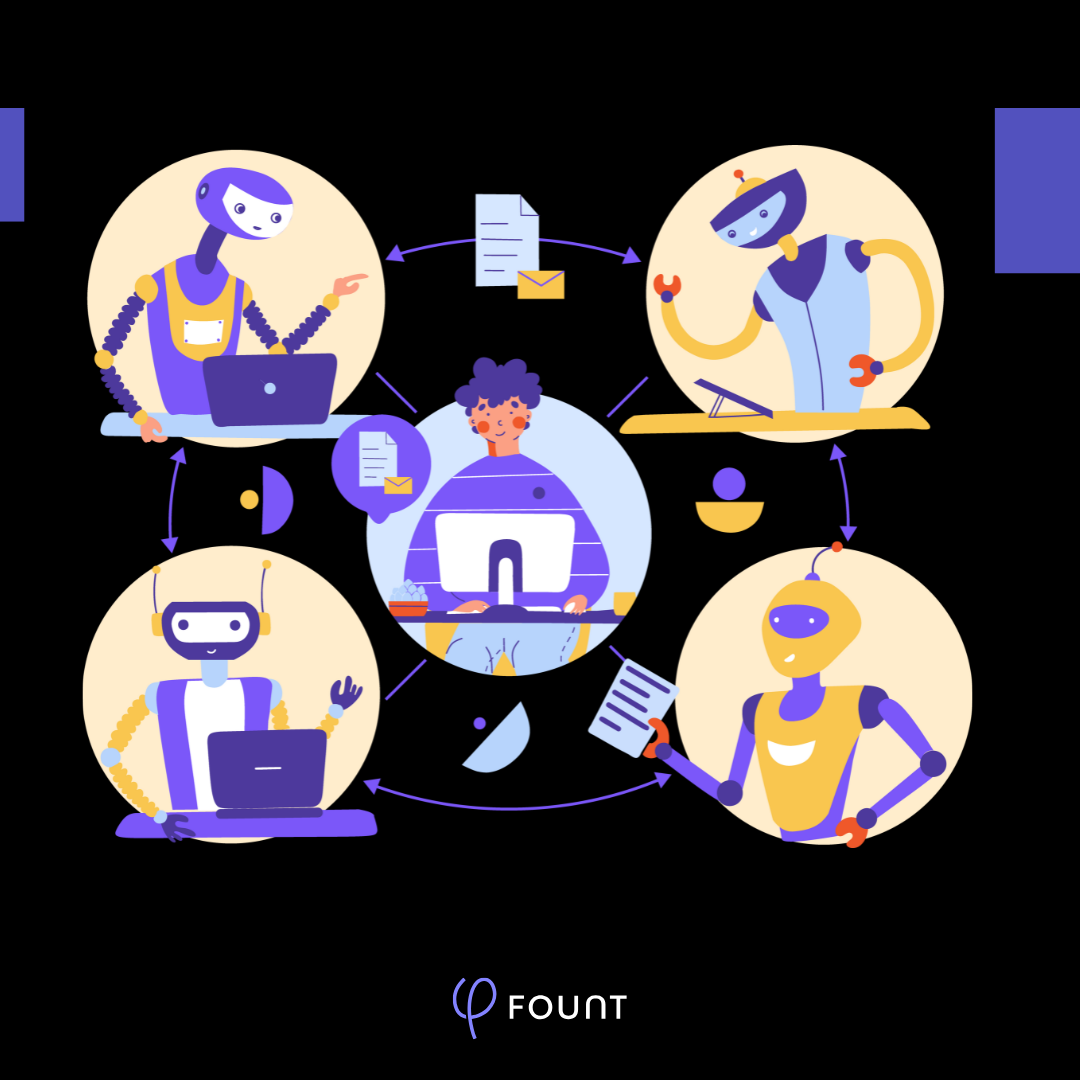
Insights
How to Keep Up with the Latest AI Developments
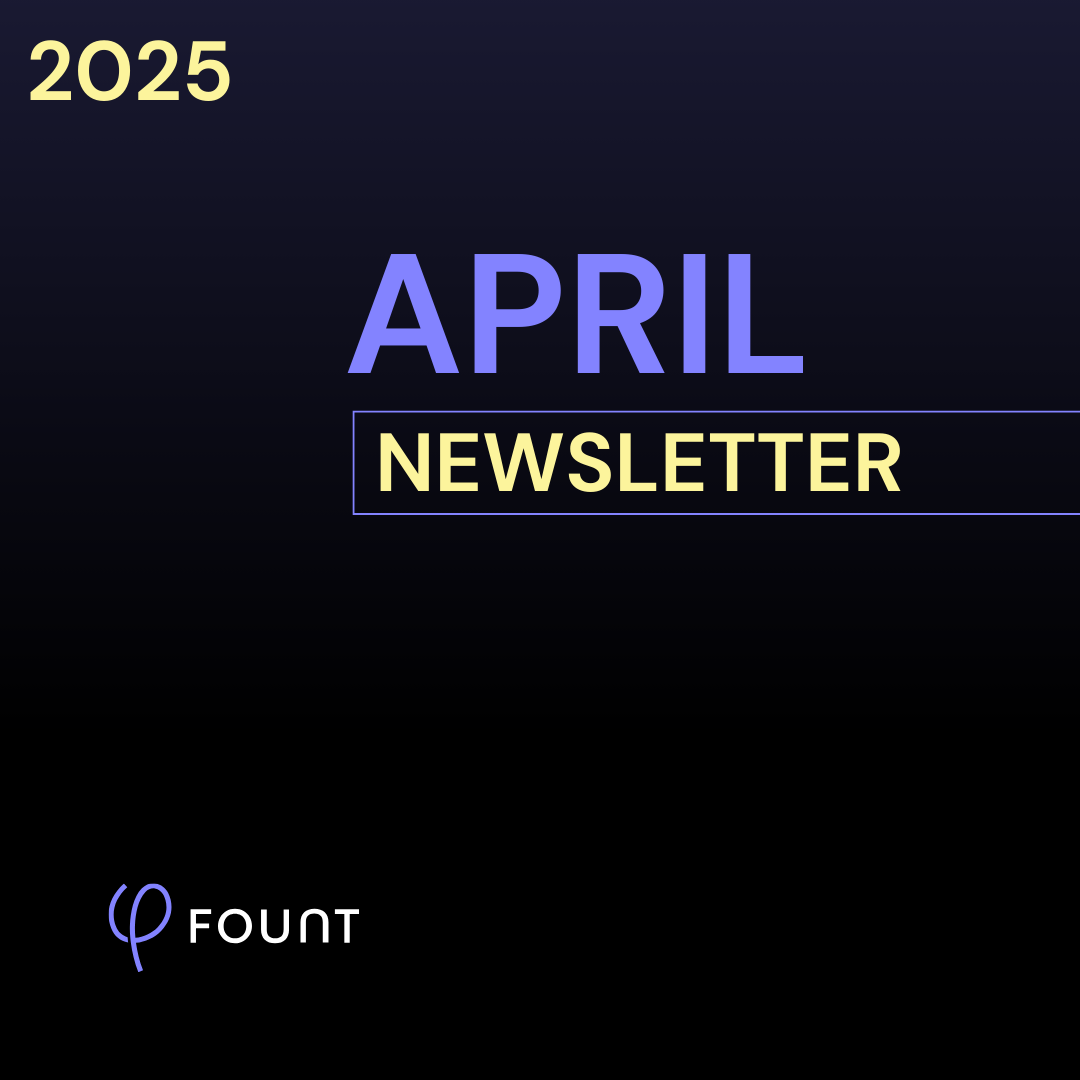
Insights
APRIL Newsletter. Friction: You Can’t Improve What You Can’t See
